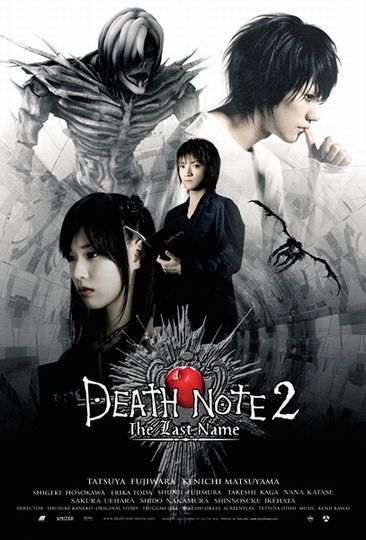Shinigami Realm
General Info

| Location Name | Shinigami Realm |
|---|
Overview
Each Shinigami lives in their own separate quarters, often on bony outgrowths, overlooking the vast expanse of their realm. Here they use the Death Note, their primary resource, to kill people and extend their lives in a twisted form of survival. Conditions in the Shinigami Empire are harsh and merciless. Unlike on Earth, there is no physical food here. Shinigami can't die of starvation or old age, but they can die if they don't kill people on a regular basis, as each name written on their death note subtracts from a person's lifespan and adds something to it.
Setting is a common form of trade for Shinigami. It is a substance that can indicate the remaining life expectancy of people and is often used in business and gambling in their bone casinos. Despite the somber atmosphere, the Shinigami realm also has a special sense of communion between the gods of death. There is a certain camaraderie marked by the essence of competition and a shared understanding of the harsh dynamics of survival. Unfathomable to humans, the Shinigami realm is actually a frighteningly unique world that exists parallel to our own.
History
Centuries ago, the Shinigami realm was a void, devoid of any life form until the rise of the Shinigami, the gods of death. The creation of these creatures from nothing remains a fascinating story. Legends whisper that the first Shinigami was born from the remains of a dead man who happened to have a death note, a chilling testament to the cyclical nature of life and death. The kingdom slowly turned into a wasteland inhabited by these mysterious gods of death. Time in this dimension seems to run at a very different rhythm, incomprehensible by human standards. Despite its grim exterior, this kingdom is a complex Shinigami social structure.
As time passes and many Shinigami disappear, many Death Notes end up in the human world, creating a surreal connection between the two dimensions. Set the otherworldly stage for the epic battle between protagonist Light Yagami and Detective L. However, the Shinigami Kingdom has kept much of its secrecy. Even the residents seem to have no knowledge of its deeper structure. This sense of the unknown only adds to the eerie allure of this dimension, leaving an indelible mark on the recesses of all who dare to venture into its deathly silence.
Today, the Shinigami Empire is an unparalleled symbol of the interplay between life and death, embodying the great theater of existential terror and the unknown that lies behind the veil of mortality. It's an essential element of the Death Note universe, fueling the entire story with a constant stream of chilling mysteries and intrigue.
Background
This realm is inhabited by monstrous alien beings known as Shinigami or Gods of Death. Shinigami claim to be uninterested in human affairs and spend most of their time in this realm, their diversion being the use of death notes to end human lives, to prolong existence. This symbolizes the general theme of cyclical life and death in the world of Death Note. What is intriguing about the Shinigami Kingdom is its dystopian portrayal. It's just a desolate, lifeless wasteland populated by skeletal structures, decaying skulls, and ghostly flickering lights that add a chilling effect. The realm is forever shrouded in great darkness, the air filled with the stench of death and decay. The only source of light is the dim, ashen moon that sits low against the bleak horizon.
There is virtually no trace of life, flora or fauna in this realm. The infrastructure stained with eternal darkness is very gloomy. Shinigami houses are structures of strange and grotesque shapes, as empty and lifeless as the inhabitants themselves.
Finally, the atmospheric conditions become unbearably suffocating, symbolically analogous to the desperate life of a Shinigami. They live a dull and monotonous life, gambling for their own amusement and passing the time until another chance to extend their lives through Death Note arises.
In conclusion, although not often visited in the manga and anime, the Shinigami Realm is an essential aspect of the Death Note universe's story. In addition to serving as the world of the death gods' existence, it also directly reflects the series' overall exploration of mortality, existential dread, and the inevitable decay associated with time and death.
